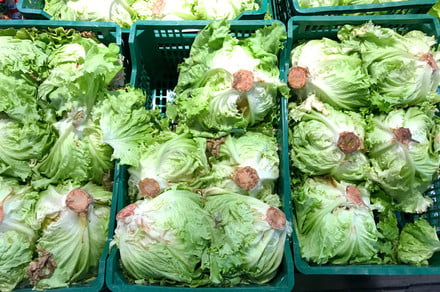When astronauts one day embark on long missions to Mars and beyond, lettuce seeds will almost certainly be going with them.
Why? Because an experiment conducted on the International Space Station (ISS) has shown that not only can the vegetable be grown in space, but also that it’s just as nutritious as the lettuce grown on Earth.
Future astronauts heading off on lengthy missions won’t have enough room to carry all of the necessary food supplies, and even if they did, the quality of any pre-packaged food would deteriorate over time. That’s why today’s astronauts have been exploring ways to cultivate crops in space.
Astronauts tried growing red romaine lettuce on the space station during a number of experiments conducted over several years, culminating in a historic lettuce-based meal on the orbiting outpost in 2015.
Some of that lettuce was preserved and returned to Earth for analysis, with the results of the research recently published in the Frontiers in Plant Science journal.
Authored by NASA’s Christina Khodadad and Gioia Massa, the report notes how a team of researchers also grew the crop on Earth in identical conditions as those on the space station — using LED lights and a special watering system, and in the same temperature and humidity levels — so it could compare the results in terms of quality and safety.
The findings were promising, with lettuce grown on the space station shown to be similar to the control lettuce grown on Earth in terms of nutritional value. Importantly, there was also no trace of bacteria such as E. coli and salmonella that can cause illness in humans.
Speaking to Newsweek about its findings, the research team said that space-grown lettuce would be able to provide “additional vitamins and other nutrients, flavors, textures, and variety to the packaged diet,” adding, “Growing plants may also help with menu fatigue and provide psychological benefits when astronauts are far from home. In the long term, if we ever want to have space colonization, growth of crops will be crucial for establishing any level of sustainability and self-sufficiency.”
The team said that in addition to providing food, “plants may also play a role in future life support systems needed for long-duration missions. Plants generate oxygen as well as remove and fix carbon dioxide, which is critical in closed systems like the ISS or future moon/Mars facilities.”
Since the initial lettuce-growing experiments on the ISS, astronauts have been looking at ways to grow some rather more exciting foodstuffs. Last year, for example, NASA began prepping a new research effort aimed at making the Española chili pepper become the first fruiting plant to be grown and harvested in space. Packed with vitamins and minerals, and also an excellent source of antioxidants, the pepper has a relatively short growth period and require little maintenance. Other foods already grown in space include cabbages, radishes, and peas.
But astronauts on long missions will also be able to gorge on some comfort foods, with pizza already having been wolfed down in space. More recently, those aboard the space station conducted the first-ever baking experiment on the ISS using a special oven to knock out some tasty cookies.

